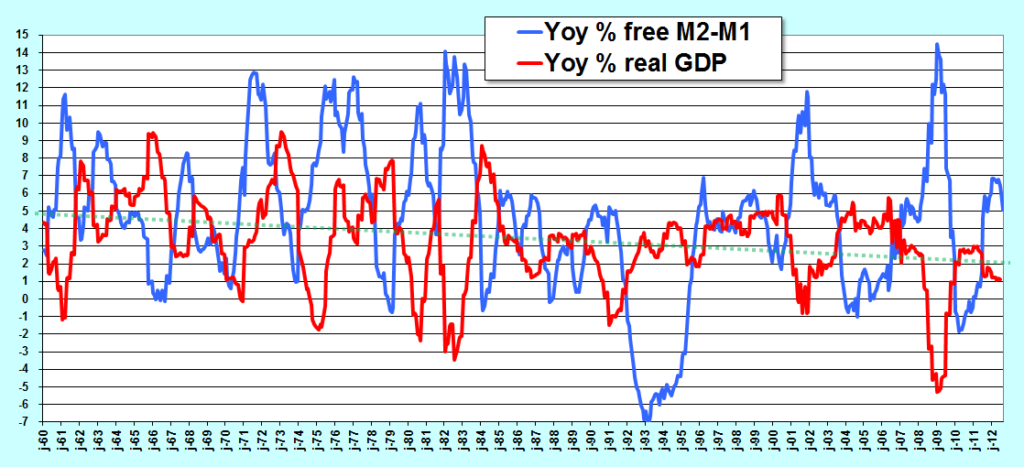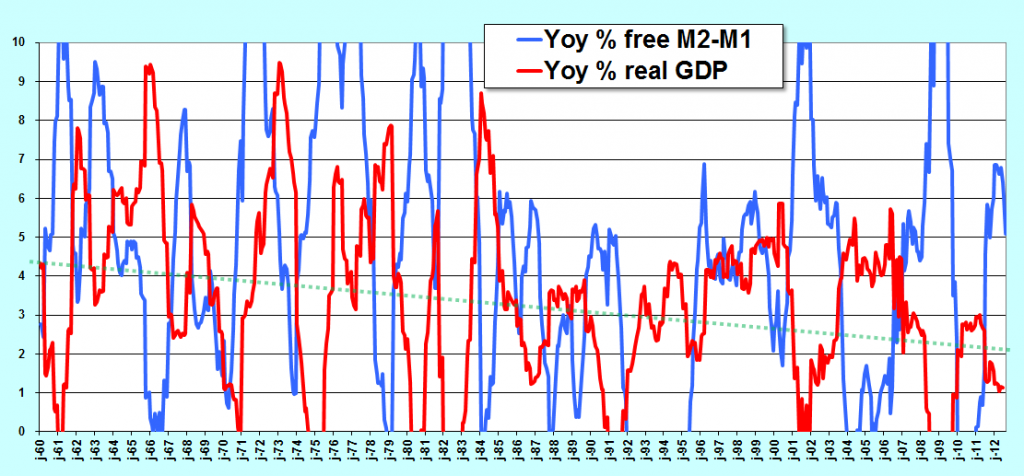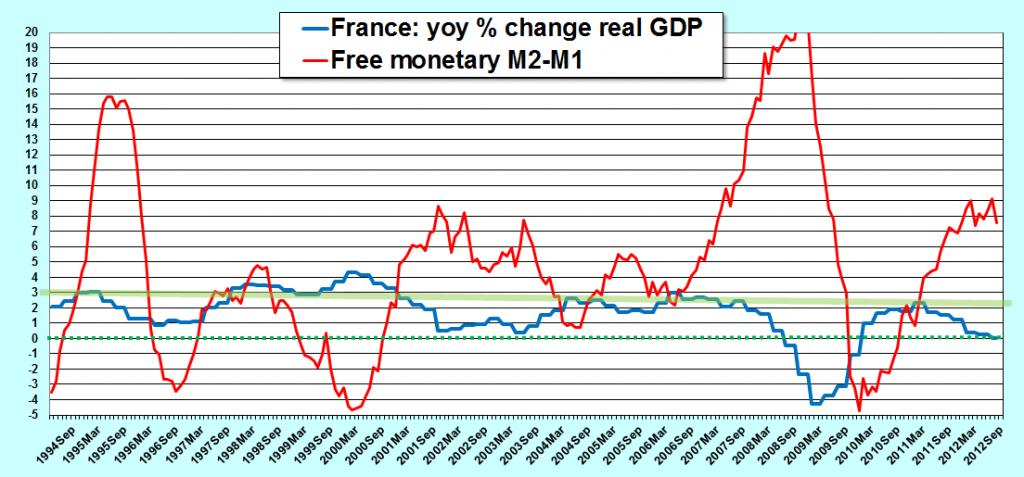Changes in real GDP are inversely proportional to those of the free money supply M2-M1 which is the difference between the change in the monetary aggregate M2-M1 and (minus) real GDP growth (year on year %).
In other words, the variations of the free money supplyare driving: the increase in free money supply M2-M1 leads to a decline in real GDP growth, and vice versa, which is particularly visible in United States over the long term, since 1960, that is to say, since these data were published,
Document 1:

The explanation is simple, everything is simple as saying Milton Friedman, the father of monetarism: when consumers increase their precautionary savings (M2-M1) at a rate higher than nominal GDP growth because they have no confidence in the future, they reduce their expenditures, reducing demand, and supply adapts to real GDP growth then decreases to become zero or even negative.
Conversely, as increase in precautionary savings … decreases (at a rate lower than the current GDP growth) as consumers have confidence in the future, expenditures increased even with increased demand, the supply adapts, thereby increasing the real GDP growth.
For over 50 years, the balance between changes in free money supplyM2-M1 and real GDP growth decline from 5% to 2% in recent years (zoom)
Document 2:

In fact, real GDP growth is logically slightly higher than productivity gains around 2% which is also the rate of increase of the free money supply M2-M1 i.e. a logic M2-M1 increase at 4% corresponding to current GDP growth with inflation around 2%.
Since the post-war period, the Fed had never managed to keep a sustainable real GDP growth at a rate close to its optimum potential. It created cycles, especially to lower inflation.
It is possible only after the bubble burst in M3-M2, that stealth bomber B-2, Ben Bernanke, manages to maintain a real GDP growth rate near around its optimum potential for an extended period.
This rule of free money supply M2-M1 is also verified with M3,
Document 3:

M3-M2 changes were very strong and uncorrelated with those of M2-M1 but since the 90s they are less strong and in phase,
Document 4:

Finally, changes in M2-M1 free money supply were similar to those of M3,
Document 5:

Contrary to commonly held, it is not by increasing the money supply and even less by monetary creation that economic activity can be restarted, but instead by restricting it. Conversely, the increase in the money supply slows real GDP growth.
In euro area, the excessive monetary creation in M1 condemns GDP growth to be permanently lower than its optimum potential because the fundamentals are not healthy: unearned money is largely distributed, especially in these PIGS Club Med countries (sound money is the first pillar of Reaganomics).
The necessary condition to boost real GDP growth would be to break the M1 monetary hypertrophy and the euro-system. To do this, it would necessarily restrict the mass distribution of so-called social aid which would simultaneously reduce the tax ratio.
This rule of free money supply is universal (it is valid in all countries insofar as there is no monetary hypertrophy), so in France,



